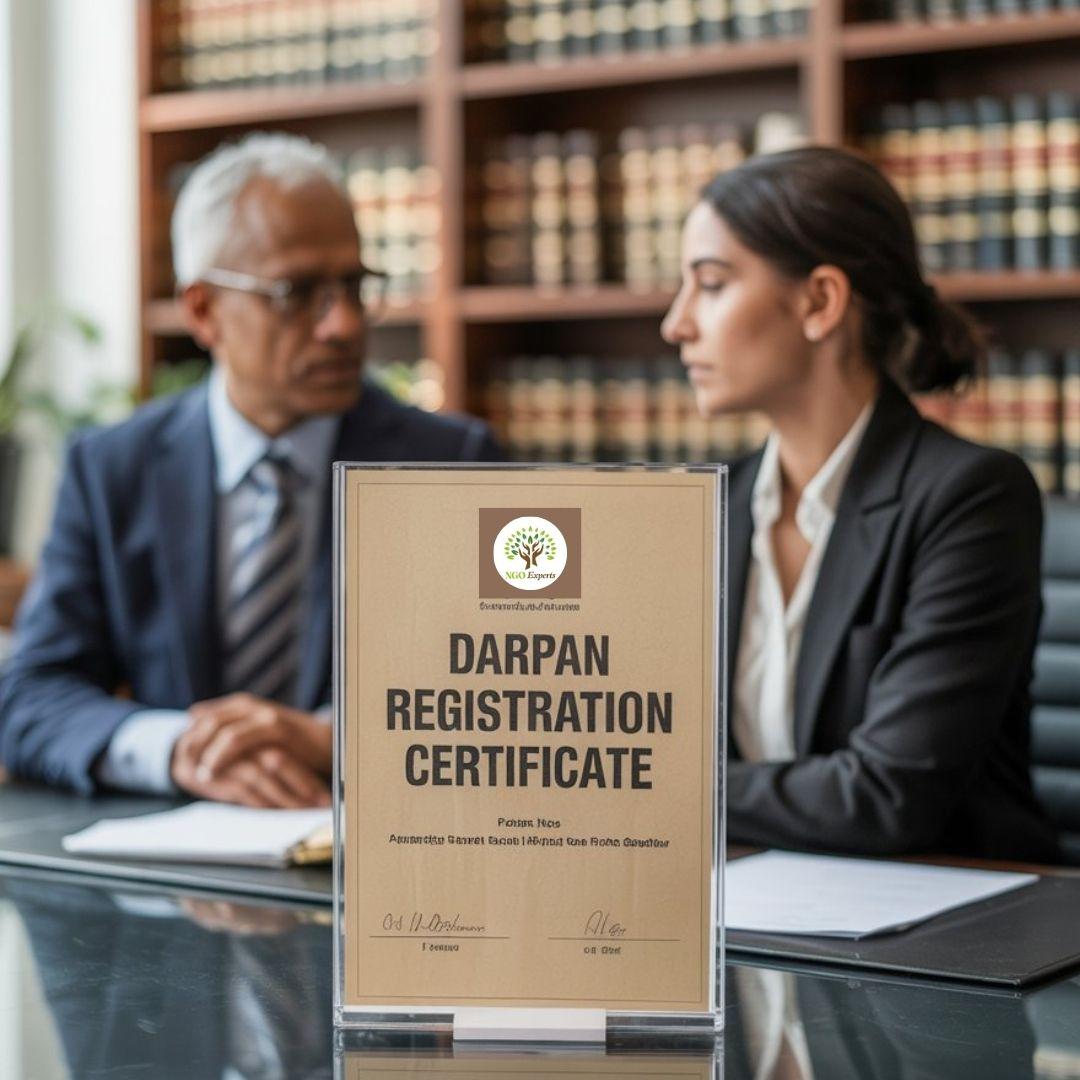When I started working with NGOs, one of the most important things I learned was how vital the Darpan registration certificate is. It connects NGOs directly with government departments and opens doors for grants and support. Many new organizations find the process confusing, so I want to explain it in a simple and practical way.
Understanding the Darpan Registration Certificate
The Darpan registration certificate is issued by NITI Aayog for NGOs and voluntary organizations in India. It serves as a digital identity for NGOs and helps them build credibility. With this certificate, an NGO can apply for government schemes, CSR funds, and other benefits.
Getting this certificate also makes it easier for organizations to share their mission and work with government agencies. It ensures transparency and helps maintain public trust.
Why Every NGO Should Get Darpan Registration
If you run an NGO, this registration is not just an option—it’s a necessity. It shows that your NGO is officially recognized and allows you to apply for funding or collaborations. Many government departments ask for a Darpan registration certificate before considering any proposal.
When I guide organizations, I always recommend getting this done early. It saves time later when applying for grants or signing partnerships. Having this certificate also adds professionalism to your NGO’s profile.
The Process to Register NGO in Simple Steps
Before applying for the Darpan registration certificate, your NGO must be legally registered. You can register your organization as a Society, Trust, or Section 8 Company. Each type has its own rules, but the process to register NGO is generally similar.
- Choose the structure: Decide if you want to form a Society, Trust, or Section 8 Company.
- Prepare documents: Collect ID proofs, address proof, and a clear statement of objectives.
- Apply for registration: Submit the application to the appropriate authority. For example, a Society Registration is done under the Societies Registration Act, 1860.
- Obtain registration certificate: Once your NGO is legally registered, you can apply for a Darpan ID online.
After you complete these steps, you’re ready to move to the Darpan portal.
How to Apply for Darpan Registration Certificate
The online process is simple and doesn’t take long. Here’s how I usually explain it to clients:
- Visit the NGO Darpan portal
- Create your login ID by providing basic NGO details like name, registration number, and PAN.
- Upload documents such as your Society Registration certificate, PAN card, and office address proof.
- Add key members’ details including name, position, and contact information.
- Submit and verify the information.
After submission, the NITI Aayog team reviews the application. Once approved, your NGO receives a Darpan registration certificate with a unique ID. This ID is needed for all future communications with the government.
Benefits of Having a Darpan Certificate
From my experience, the benefits go beyond compliance. With the certificate, NGOs gain visibility on a national platform. It helps donors and ministries verify your authenticity. Also, it becomes easier to get CSR funding once your Darpan ID is linked to your registration and PAN.
Another major benefit is credibility. When your NGO is listed on the Darpan portal, people trust it more. It shows that your work is genuine and your organization is transparent.
Conclusion
Getting a Darpan registration certificate may seem like a small step, but it creates big opportunities. It’s essential for every organization that wants to grow, collaborate, and contribute to society in a meaningful way.
If you’re unsure about the process to register NGO or need help with Society Registration, my team at NGO Experts can guide you through every stage. We handle the paperwork, online submissions, and verification process so you can focus on your mission.
At the end of the day, I believe every NGO deserves a fair chance to make an impact. With the right legal support and registrations in place, your vision can reach more people and bring real change.



